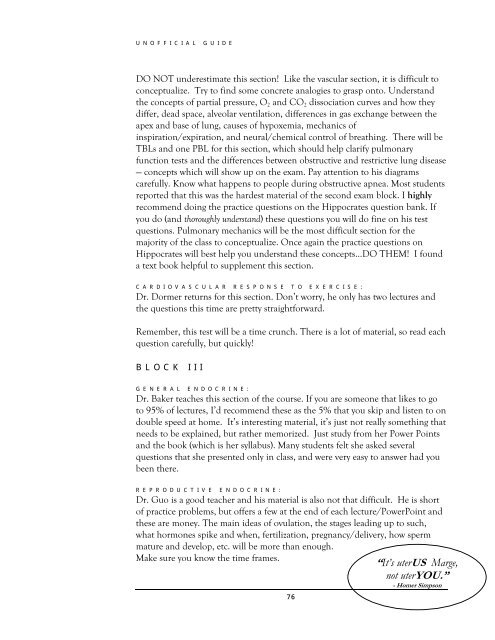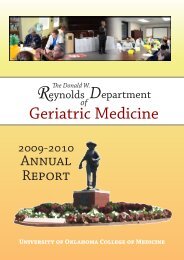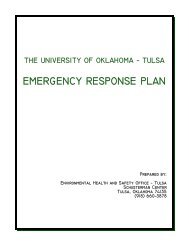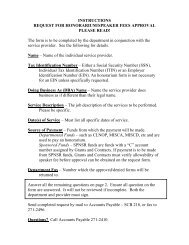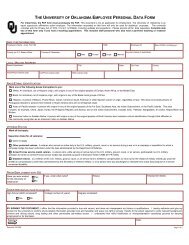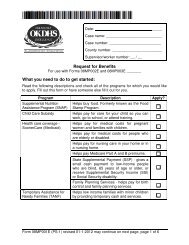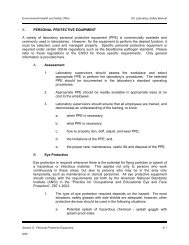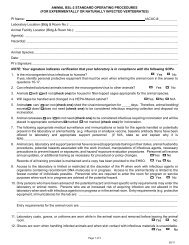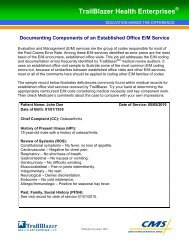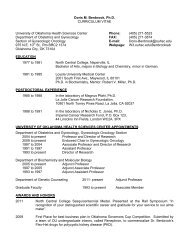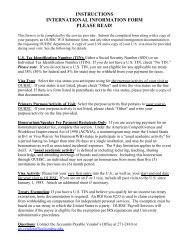The Unofficial Guide to First Year - University of Oklahoma Health ...
The Unofficial Guide to First Year - University of Oklahoma Health ...
The Unofficial Guide to First Year - University of Oklahoma Health ...
Create successful ePaper yourself
Turn your PDF publications into a flip-book with our unique Google optimized e-Paper software.
UNOFFICIAL GUIDE<br />
DO NOT underestimate this section! Like the vascular section, it is difficult <strong>to</strong><br />
conceptualize. Try <strong>to</strong> find some concrete analogies <strong>to</strong> grasp on<strong>to</strong>. Understand<br />
the concepts <strong>of</strong> partial pressure, O 2 and CO 2 dissociation curves and how they<br />
differ, dead space, alveolar ventilation, differences in gas exchange between the<br />
apex and base <strong>of</strong> lung, causes <strong>of</strong> hypoxemia, mechanics <strong>of</strong><br />
inspiration/expiration, and neural/chemical control <strong>of</strong> breathing. <strong>The</strong>re will be<br />
TBLs and one PBL for this section, which should help clarify pulmonary<br />
function tests and the differences between obstructive and restrictive lung disease<br />
— concepts which will show up on the exam. Pay attention <strong>to</strong> his diagrams<br />
carefully. Know what happens <strong>to</strong> people during obstructive apnea. Most students<br />
reported that this was the hardest material <strong>of</strong> the second exam block. I highly<br />
recommend doing the practice questions on the Hippocrates question bank. If<br />
you do (and thoroughly understand) these questions you will do fine on his test<br />
questions. Pulmonary mechanics will be the most difficult section for the<br />
majority <strong>of</strong> the class <strong>to</strong> conceptualize. Once again the practice questions on<br />
Hippocrates will best help you understand these concepts…DO THEM! I found<br />
a text book helpful <strong>to</strong> supplement this section.<br />
CARDIOVASCULAR RESPONSE TO EXERCISE:<br />
Dr. Dormer returns for this section. Don’t worry, he only has two lectures and<br />
the questions this time are pretty straightforward.<br />
Remember, this test will be a time crunch. <strong>The</strong>re is a lot <strong>of</strong> material, so read each<br />
question carefully, but quickly!<br />
BLOCK III<br />
GENERAL ENDOCRINE:<br />
Dr. Baker teaches this section <strong>of</strong> the course. If you are someone that likes <strong>to</strong> go<br />
<strong>to</strong> 95% <strong>of</strong> lectures, I’d recommend these as the 5% that you skip and listen <strong>to</strong> on<br />
double speed at home. It’s interesting material, it’s just not really something that<br />
needs <strong>to</strong> be explained, but rather memorized. Just study from her Power Points<br />
and the book (which is her syllabus). Many students felt she asked several<br />
questions that she presented only in class, and were very easy <strong>to</strong> answer had you<br />
been there.<br />
REPRODUCTIVE ENDOCRINE:<br />
Dr. Guo is a good teacher and his material is also not that difficult. He is short<br />
<strong>of</strong> practice problems, but <strong>of</strong>fers a few at the end <strong>of</strong> each lecture/PowerPoint and<br />
these are money. <strong>The</strong> main ideas <strong>of</strong> ovulation, the stages leading up <strong>to</strong> such,<br />
what hormones spike and when, fertilization, pregnancy/delivery, how sperm<br />
mature and develop, etc. will be more than enough.<br />
Make sure you know the time frames.<br />
76<br />
“It’s uterUS Marge,<br />
not uterYOU.”<br />
- Homer Simpson


